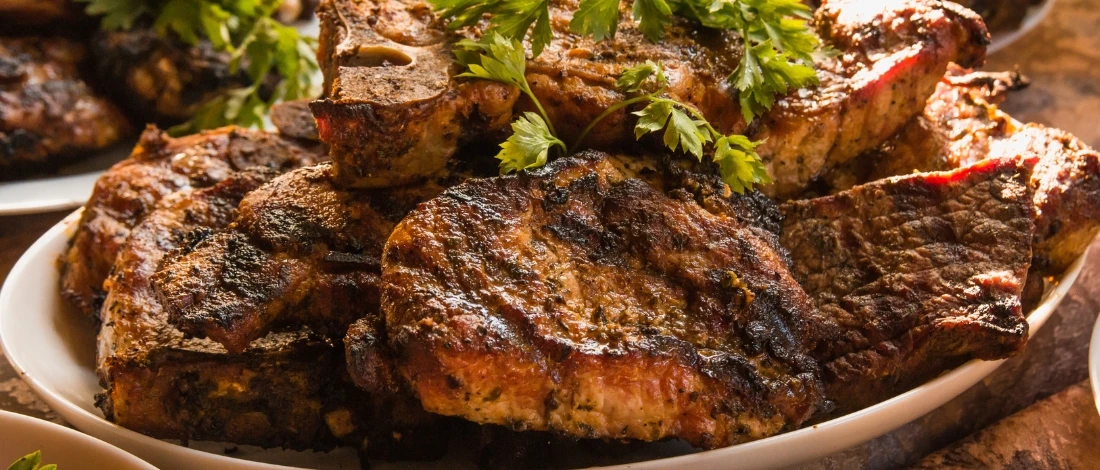Although I usually choose healthy meat options on my carnivore diet, eating Spam is one of my guilty pleasures.
Understanding the significance of dietary choices is paramount, and Spam meat, with its unique characteristics, warrants attention.
Therefore, I did an in-depth analysis, consulted with peers in the nutrition industry, and thoroughly reviewed reliable sources.
This article aims to provide a comprehensive overview of Spam meat, its nutritional content, health benefits and concerns, and how to prepare and cook with it.
Quick Summary
- Spam meat is a canned, pre-cooked meat product made by Hormel Foods.
- Hormel Spam is made of pork with ham, salt, water, potato starch, sugar, and sodium nitrite.
- Hormel Spam is high in protein but also high in sodium and fat.
What is Spam Meat?

Spam brand meat is a canned, pre-cooked meat product that has been around for over 80 years.
It is a popular food item in many parts of the world, including the United States, the United Kingdom, and many Asian countries.
The Hormel Spam brand name was in place long before the advent of annoying emails. Spam first hit shelves in 1937 and was a massive success during the Great Depression.
It helped fill a huge need for inexpensive meat products with quality protein.
Jay Hormel, one of the former Hormel Foods executives, devised it and combined the words "spiced ham" to create the name “Spam.”
Since then, this luncheon meat has become a staple in some parts of the culinary world, and cans of Spam can be found in the supermarket aisle almost everywhere.
Also Read: What Is Potted Meat?
What Is Spam Meat Made Of?
Spam meat is made of ground-up pork products with added ham meat, salt, water, potato starch, sugar, and preservatives like sodium nitrite [1].
The food is then cooked at the proper temperature to sterilize the product and retain freshness. The pork, ham, and other ingredients mixture is canned when it reaches the right temperature.
This canned lunch meat product is available in various flavors, such as teriyaki, hickory smoke, and hot & spicy Spam. The manufacturer, Hormel Foods, has also released Spam with jalapenos, Spam with bacon, and even Spam with tocino seasoning.
During World War II, Spam became a staple food item for the US military, as it was easily shipped and could be stored without refrigeration for long periods.
"When the first SPAM® cans came off the production line in 1937, the world was forever changed. This revolutionary new product won over the hearts of soldiers, world leaders, celebrities, chefs, kids and parents."
- Hormel Foods' Official Website
The product's popularity grew after World War II, and today, Spam varieties are sold in more than 40 countries worldwide.
Today, Spam products are so popular that a Spam museum opened in Austin, Minnesota. Founded in 1991, it is a must-visit destination for Spam fans [2].
Nutritional Information

One 2-ounce serving of Spam contains 180 calories, 7g of protein, 1g of carbohydrates, and 16g of fat, including 6g of saturated fat [3].
It also contains 790mg of sodium, which is over 1/3 of the recommended daily sodium intake for an adult.
In addition, Spam includes 40mg of cholesterol and small amounts of several vitamins and minerals, including vitamin B12, iron, and potassium.
Related Articles:
Health Benefits and Concerns
One of the biggest concerns with Spam is its high sodium content. A diet high in sodium can cause high blood pressure, leading to several health problems, including heart disease, stroke, and kidney disease.
In addition, the high-fat content in Spam, particularly saturated fat, can contribute to obesity and increased risk of heart disease.
Another concern with Spam is the presence of nitrates and nitrites added to processed meats to help preserve their color and flavor.
Being a processed meat item, spam also contains elevated fat and cholesterol levels.
Sodium nitrate and nitrite have been linked to increased cancer risk, particularly in the colon and stomach [4].
However, the research on the link between nitrates/nitrites and cancer is still inconclusive, and more research is needed to understand the risks thoroughly. This is the only one of Spam’s ingredients that might raise eyebrows.
Furthermore, consuming Spam regularly without making diet and calorie intake adjustments may lead to an increase in body weight.
However, there are also some health benefits of Spam brand foods. For example, Spam is an excellent source of protein, which can help build and repair muscles.
It is also a good source of vitamin B12, which is essential for nerve and red blood cell health [5].
Cooking with Spam

Spam is a pretty simple canned meat that can be cooked in various ways.
Cans of Spam can be sliced and fried, added to soups or stews, or used as a topping for pizza or sandwiches.
Here are a few recipe ideas for preparing and cooking with Spam products.
1. Fried Spam
One of the most popular recipes for eating Spam products is by slicing and frying it in a pan.
To make fried Spam, cut the meat into thin slices and fry them in a little bit of oil until they are crispy on both sides. Serve with a fried egg and toast for a classic breakfast dish.
2. Spam Musubi

Spam Musubi has been a popular Hawaiian dish since after the World War, made by wrapping a slice of Spam in rice and seaweed.
To make Spam Musubi:
- Start by cooking a cup of sushi rice.
- Cut a sheet of nori (seaweed) into a rectangle and place it on a piece of plastic wrap.
- Place a slice of Spam on the nori and top it with only a small circle of teriyaki sauce.
- Add a layer of rice on top of the Spam and press it down firmly.
- Fold the nori over the rice and Spam, and use the plastic wrap to shape the musubi into a rectangle.
3. Spam and Pineapple Skewers
For a fun and easy appetizer, make Spam and pineapple skewers. Cut the Spam into cubes and skewer them with chunks of fresh pineapple.
Brush the skewers with some honey and soy sauce, then grill or bake them until the Spam is crispy and the pineapple is caramelized.
4. Spam Fried Rice

You can use Spam products as a protein in a rice dish. To do this, cook a cup of white rice.
While the rice is cooling, cook Spam cubes and vegetables such as onion, carrot, and frozen peas in a pan.
Once the Spam is cooked, add the cooked rice with some soy sauce and fry the mixture until the rice is slightly crispy.
FAQs
What Does Spam Taste Like?
Spam tastes like salty ham but has the texture of bologna or a hot dog. This canned meat product has a slightly sweet and smoky flavor from the added seasonings.
How Are Cans of Spam Different From Ham?
Cans of Spam are different from ham because they are made from pork, ham meat, and other seasonings. Ham, like bacon, is simply smoked and cured pork from one part of the pig. Spam remains a combination of ingredients, while ham has only one.
Is Spam a Bully Beef?
No, Spam is not bully beef. Also known as corned beef, bully beef comes from the brisket of a cow and is usually cooked in a tinfoil pan with vegetables. Spam products are made from pork shoulder, ham, and other seasonings.
Is Spam Healthy for You?
Spam can be unhealthy for you due to its classification as processed meats. Consumption of processed foods may contribute to health risks. It's advisable to limit intake for a healthier diet.
References:
- https://www.hormelfoods.com/newsroom/news/what-is-spam-anyway/
- https://theclio.com/entry/53794
- https://www.nutritionvalue.org/Classic_spam_by_SPAM_541053_nutritional_value.html
- https://www.ncbi.nlm.nih.gov/pmc/articles/PMC8838348/
- https://www.hsph.harvard.edu/nutritionsource/vitamin-b12









Spam Musubi is a snack I discovered on a trip to Hawaii, and now I make it at home whenever I miss the islands.